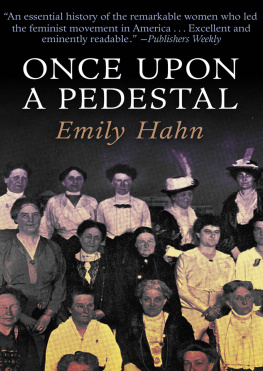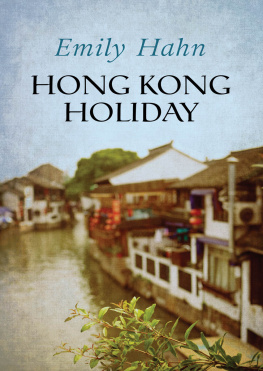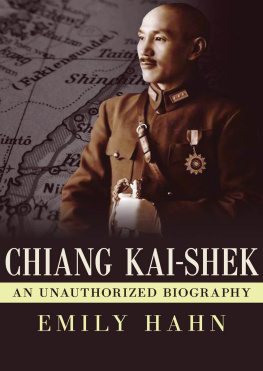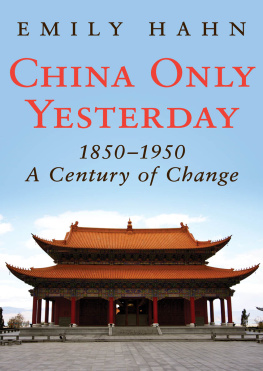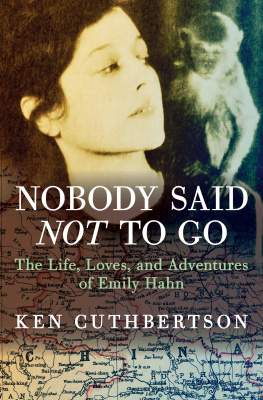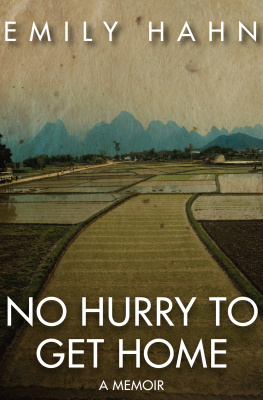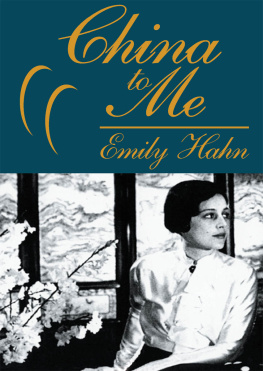Emily Hahn - Influential Women: Two Biographies
Here you can read online Emily Hahn - Influential Women: Two Biographies full text of the book (entire story) in english for free. Download pdf and epub, get meaning, cover and reviews about this ebook. year: 2018, publisher: Open Road Media, genre: History. Description of the work, (preface) as well as reviews are available. Best literature library LitArk.com created for fans of good reading and offers a wide selection of genres:
Romance novel
Science fiction
Adventure
Detective
Science
History
Home and family
Prose
Art
Politics
Computer
Non-fiction
Religion
Business
Children
Humor
Choose a favorite category and find really read worthwhile books. Enjoy immersion in the world of imagination, feel the emotions of the characters or learn something new for yourself, make an fascinating discovery.

- Book:Influential Women: Two Biographies
- Author:
- Publisher:Open Road Media
- Genre:
- Year:2018
- Rating:5 / 5
- Favourites:Add to favourites
- Your mark:
Influential Women: Two Biographies: summary, description and annotation
We offer to read an annotation, description, summary or preface (depends on what the author of the book "Influential Women: Two Biographies" wrote himself). If you haven't found the necessary information about the book — write in the comments, we will try to find it.
Once Upon a Pedestal: After living an unconventional and exotic life for decades, New Yorker writer Emily Hahn was in her late sixties when this book was first published in 1974. As the Womens Movement continued to gain momentum, Hahn penned this essential history of the remarkable women who led the feminist movement in America. Her excellent and eminently readable biographical sketches include Susan B. Anthony, Clara Barton, Fanny Wright, the Grimk sisters, Margaret Sanger, Jane Addams, Victoria Woodhull, Harriet Martineau, Eleanor Roosevelt, and Betty Friedan (Publishers Weekly).
[The] quintessential New Yorker narrator whose adventures over the last forty years have intrigued, amused and educated . . . Emily Hahn is, herself, a role model. It is fitting and felicitous for her to give us an armchair guide to strong-minded American women. The New York Times
The Soong Sisters: In 1935, intrepid journalist and fearless feminist Emily Hahn traveled to China and sent dispatches to the New Yorker. Through her lover, the Chinese poet Shao Xunmei, she met and established close bonds with three of the most instrumental women in twentieth-century Chinese history, who happened to be sisters. The Soong family was arguably the most influential family in Shanghai, even more so as eldest sister Eling married finance minister H. H. Kung; middle sister Chingling married Sun Yat-Sen, the founding father and first president of the Republic of China; and youngest sister Mayling married Chiang Kai-Shek, who succeeded Sun as the leader of the Republic of China. Hahns chronicle of the familys history, written while bombs were falling during the Second Sino-Japanese War, and published in 1941, while Hahn was still in Japanese-occupied Hong Kong, is a vivid, comprehensive, and uniquely personal account of the sisters who would become known to the world as Madame Kung, Madame Sun, and Madame Chiang Kai-Shek.
First rate reportorial job on three distinguished women . . . [a] tribute to their work and their individual heroisms. Kirkus Reviews
Emily Hahn: author's other books
Who wrote Influential Women: Two Biographies? Find out the surname, the name of the author of the book and a list of all author's works by series.

